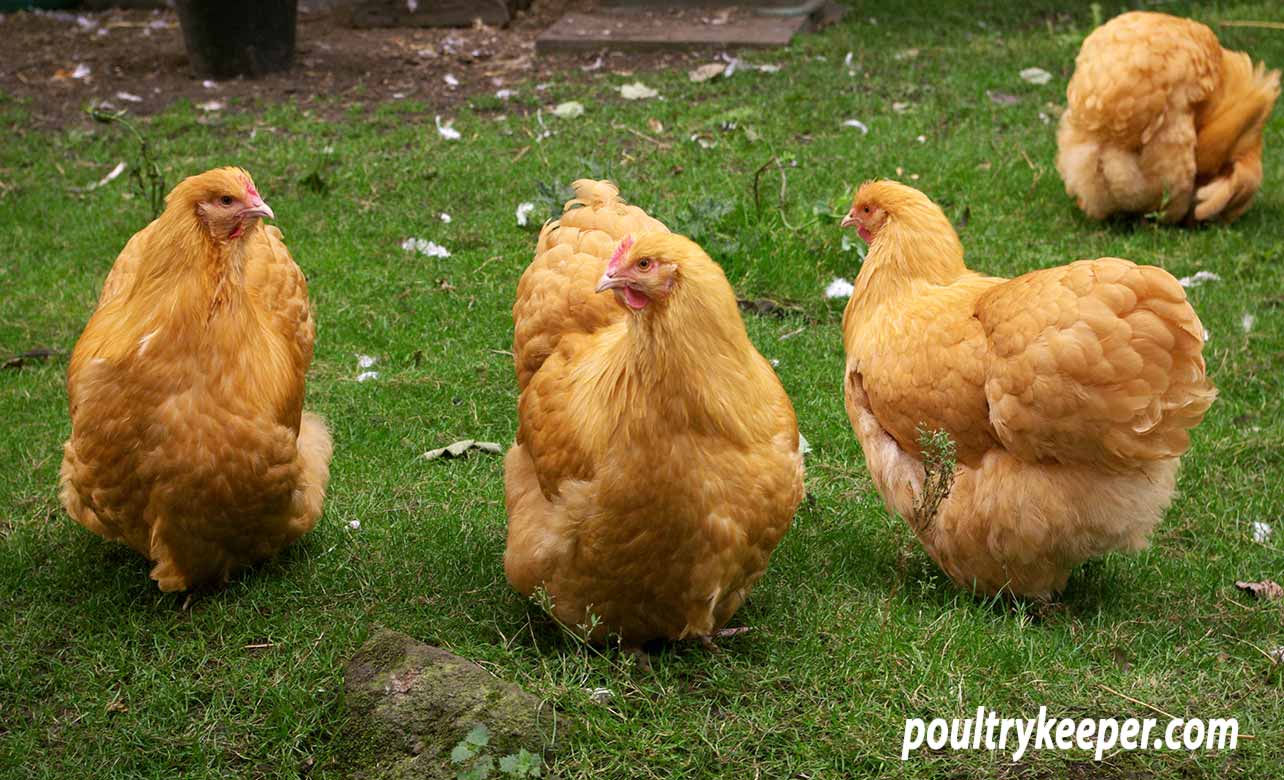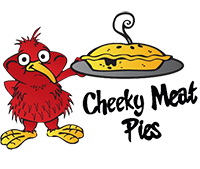The Buff Orpington chick stands out effortlessly amidst the adorable bunch of furballs in the brooder. Because they are so cute and have great personalities, they have earned their place as one of the most popular breeds of chicken everywhere. The Buff Orpingtons captivate chicken enthusiasts and breeders alike with their stunning golden plumage and gentle nature. Not only are they visually striking, but they also possess a friendly and docile demeanor. This comprehensive guide will take you on a journey through the world of breeding Buff Orpingtons. We will look at their good looks, talk about how they act, and give you helpful tips for breeding them successfully. Whether you have been breeding chickens for a long time or are just starting out, this article will help you learn how to raise these cute birds.
As a backyard chicken enthusiast, I’m always captivated by the sheer variety of beautiful chicken breeds out there. Each breed has its own distinctive look that captures the imagination. But few are as visually striking as the Buff Orpington, with its rich golden hue and fluffy, plump appearance. If you’ve ever wondered “what does a Buff Orpington chicken look like?”, this guide will give you a complete visual tour of this magnificent breed.
An Overview of the Buff Orpington Chicken
The Buff Orpington comes from England. In the late 1800s, breeder William Cook created the breed. His goal was to create a chicken that could be used for both meat production and egg production. People loved the Buff Orpington right away because it was beautiful and hardy enough to do many things.
So what exactly makes the Buff Orpington so visually appealing? Let’s break it down by looking at some key traits
The Defining Physical Characteristics of Buff Orpingtons
Plumage
The first thing you’ll notice on a Buff Orpington is its soft, abundant plumage. This chicken is lavishly feathered, with feathers that are fluffy yet smooth in texture. The feathers cover the entire body, including the legs and toes, giving the chicken a rounded, cuddly outline.
The feathers are a rich golden buff color to a lighter peach buff color. The best color is like a ripe peach. Each feather should be the same color all over, with no spots or mottling.
Body Shape
Under all those feathers lies a broad, curved body shape. The back is short and the breast prominent and broad, creating a robust, cushiony physique. The body shape is further accentuated by the plumage, making the Buff Orpington appear even larger and fuller-bodied.
Size
The Buff Orpington is considered a heavy breed, with hens weighing 7-8 lbs and roosters 8-10 lbs. Again, their substantial plumage makes them appear even bigger than their actual weight.
Head
Buff Orpingtons have heads that aren’t very big compared to their bodies. It sits upon a short, thick neck. The beak is short and stout. The head has a red single comb on top, and the wattles and earlobes are also red.
Legs
The feathers on the legs of buff orpingtons are probably the thing that makes them stand out the most. Their legs and toes are covered in soft, fluffy feathers. This gives the legs a feathered, flared silhouette. The shanks and feet themselves are a pinkish white hue.
Tail
The tail feathers are abundant, curving up and over the back in a rounded cape shape. The coverts are especially plentiful, amplifying the cushiony, teddy-bear like rump.
Seeing the Buff Orpington Chicken in Action
Now that we’ve broken down the key physical traits, let’s see the Buff Orpington chicken in action! Here are some typical behaviors that showcase their looks:
-
Foraging in the yard – This is a great opportunity to see the Buff Orpington’s fluffy feathers covering their entire body, legs and all. You’ll also note their slow, calm foraging style as they amble through the yard.
-
Perching at night – Observing them on their perch lets you see the plump, rounded body shape as they tuck in their legs and settle down for the night.
-
Preening – When a Buff Orpington preens and ruffles its feathers, you get a true sense of just how abundant their plumage is. You’ll see a cloud of feathers surround them.
-
Taking a dust bath – The dust bath showcases the Buff Orpington’s inclination to luxuriate in a nice dirt bath to clean their feathers. It’s a chance to see them relaxed and enjoying their plentiful plumage.
-
Interacting with humans – Buff Orpingtons are known for being calm and friendly. You’ll often see them approaching humans without fear or aggression. This gives you a chance to admire their beautiful coloring up close.
Spotting the Differences Between Hens and Roosters
When trying to distinguish a Buff Orpington hen from a rooster, here are some clues:
-
Size – Roosters are noticeably bigger, weighing a couple pounds more than hens on average.
-
Tail feathers – Roosters sport longer, more pointed tail feathers called sickles, while the hen’s tail is rounded.
-
Comb/wattles – Roosters have larger combs and wattles, often leaning to one side.
-
Plumage – Roosters have somewhat thinner plumage, especially around the neck area. Hens look fuller all around.
-
Behavior – Roosters strut assertively and crow loudly. Hens have a gentle demeanor.
From Chick to Chicken: The Development of Buff Orpington Chicks
Part of the intrigue of chicken keeping is watching chicks grow into mature birds. So what do Buff Orpington chicks look like, and how do they develop?
Newly Hatched Chicks
A newly hatched Buff Orpington chick is covered in soft yellow down. Their color isn’t very defined yet, appearing more fuzzy yellow than true buff. Their down will be fluffy and they look small and delicate. Their beak, legs and feet will be a pinkish hue.
Adolescent Feathering Stage
At around 2-3 months, young Buff Orpingtons enter the “ugly stage” as they grow their first real feathers. They’ll look patchy and uneven during this stage. But soon their emerging hackle and saddle feathers will become visible in the distinctive buff shade.
Maturing Plumage
By 5-6 months old, the buff-colored feathers will be filling in nicely. The chick will start to show the breed’s classic plumage abundance around the body, wings, and thigh area. Their juvenile feathers will be replaced by sleek, mature ones.
By full maturity around 1 year old, the Buff Orpington will sport its peak plumage volume and color depth. The hen’s broad, plush physique will be fully evident by this point too.
In Summary: The Classic Buff Orpington Look
- Dense, profuse plumage in a rich buff color
- Broad, plump, cushiony body shape
- Heavily feathered legs and toes
- Small head atop a short, thick neck
- Bright red single comb and wattles
- Friendly demeanor and relaxed behaviors
This heritage breed is truly a sight to behold thanks to the vision of its originator. The Buff Orpington chicken remains a beloved backyard chicken breed for both its beauty and utility. Its warm golden radiance and fluffy feathers will brighten any flock!

Choosing Your Buff Orpington Chick: Finding the Perfect Feathered Friend
Embarking on the journey to select a Buff Orpington chick is an exciting adventure. These chicks, known for their gentle disposition and striking golden plumage, make wonderful additions to any flock. Heres how to ensure you pick the best one, keeping an eye out for signs of health, vitality, and the breeds renowned friendly nature.
Selection Criteria to Consider
- Health and Vitality: The foundation of a great choice. Look for a chick that is: awake and active; has bright, curious eyes; has clean feathers that are free of mites and lice;
- Physical Features: A well-bred Buff Orpington will have a round body with a wide breast, a thick neck that supports a cute little head, and a straight, strong stance that shows a strong skeleton.
- Beautiful feathers are what make the Buff Orpingon stand out as a beautiful bird. Look for Buff Orpington chicks that have soft, fluffy feathers that are all the same shade of buff. Also, look for chicks that have consistent coloration; any that have pale or uneven colors could mean there are problems deeper down.
- Behaviors: Living up to their name, the best Buff Orpington chicks should show: Calm and friendly behavior, indicating that they will grow up to be friendly and obedient adults
Buff Orpington All You Need To Know Temperament and Egg Laying
FAQ
What is a Buff Orpington chicken?
The Buff Orpington chicken was bred for meat and eggs but what is most impressive about this popular breed is its color. It’s also one of the heritage breeds. They have brilliant gold and beige hues across their feathers that have contributed to their favorability among backyard chicken keepers.
What color ear lobes does a Buff Orpington chicken have?
The Buff Orpington chicken have white color ear lobes. The association of the United States of America Poultry accepted the Orpington colors as Blue color: 1923, Black Color: 1905, Buff Color: 1902, and White Color: 1905 You will find Buff Orpington in two major sizes: Bantam and Standard.
What does a Buff Orpington Chick look like?
The Buff Orpington chick should be fluffy and solid buff or gold in color. They should not have any dark brown, black, or gray spots on their wings, chest, or abdomen. Instead, they should have some light spots there. How to Sex Buff Orpington Chicks?.
Are Buff Orpington chickens a good hobby?
Keeping a flock of your own chickens can be a fun and rewarding hobby, and one of my favorite breeds of chicken are Buff Orpington chickens. I’ve kept buffs pretty consistently for more than a decade, and between their size, egg production, and their temperament, they are the perfect bird for any casual backyard hobbyist.
What does a Buff Orpington bird look like?
They are dual-purpose birds, which means they can be used for egg-laying and for meat production. Buff Orpington’s eggs are brown in color and large to extra large in size. They lay between 3-4 eggs each week. Buff Orpingtons have white skin and a single comb.
What color eggs do Buff Orpington lay?
Buff Orpington chickens lay light to medium brown eggs. The eggs are typically large to extra-large in size according to Tractor Supply.
Do buff Orpingtons stop laying in winter?
As with many chicken breeds, different strains of Orpingtons may lay different tinted eggs. In fact, some Orpingtons are known to lay light brown eggs with a slight pinkish hue. They are great winter-time layers, as the hens are not as affected by cold weather and will continue laying during the winter months.
What are the characteristics of a Buff Orpington chicken?
Buff Orpington chickens are known for their large size, fluffy buff-colored plumage, and docile, friendly temperament. They are considered a dual-purpose breed, providing both meat and a good number of large, brown eggs.
What does a Buff Orpington hen look like?
What do Buff Orpington chickens look like? Buff Orpingtons are very large, heavy, and fluffy chickens. They have a stocky build and a broad body with short backs and legs.
